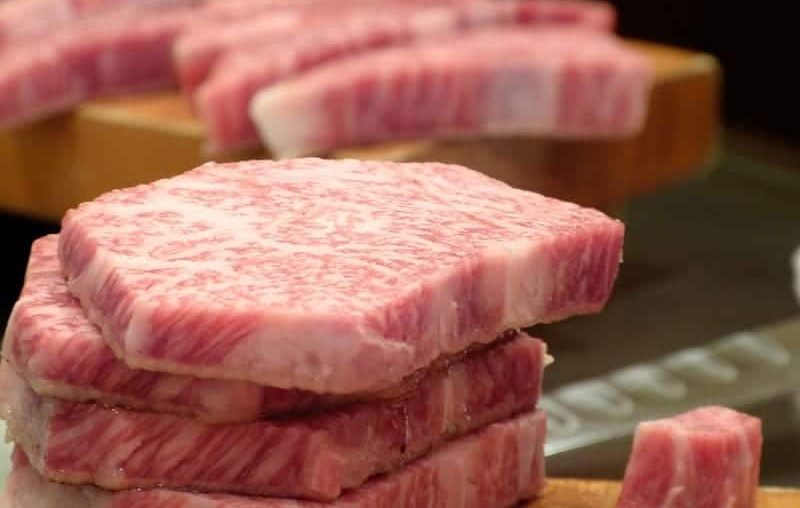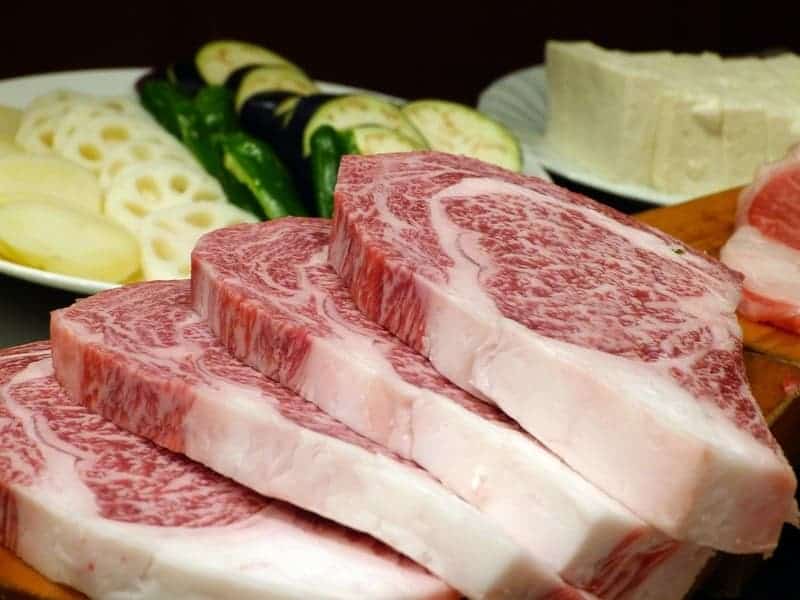
Wagyu beef is some of the most expensive meat in the world. If you’ve never had it (or never looked into the history), it may be difficult to understand why it commands such a mind bogglingly high market price.
However, the concept is really quite simple, even boring if you think about it. It’s expensive for the same reason most things that are expensive: high demand, low supply.
There are a large number of factors that contribute to this low supply, though, which is perhaps the more interesting thing to talk about.
Where Do Wagyu Beef Come From?
You likely already know this, but Japan is not a very large country. They don’t have vast swathes of mostly untouched grazing land that countries like the United States do that allow them to essentially “mass produce” beef in the same fashion.
As a result, beef is in general quite expensive in Japan, as it needs to be imported for the most part, or raised on one of a very small number of farms.
Wagyu beef then takes those natural problems of low availability to the extreme, as it is a very specific KIND of Japanese beef.
Wagyu beef can only be harvested from one of 4 specific breeds of Japanese cow that are exclusive to the region. They all have the same genetic abnormality that causes fat to be distributed evenly among the muscle, rather than accumulating on the exterior for the most part.
This results in an insane marbling unrivaled by any other beef around the world, with a fatty, melt in your mouth texture and a strangely sweet taste that’s also unlike any other beef.
Wagyu Beef Prices
As you might imagine, this makes wagyu highly sought after beef, and most of it is sold in Japan, to Japanese restaurants and merchants, where it commands a price equivalent to about $120 per pound: and that’s for the “entry level” types of wagyu which are relatively affordable to the standard consumer.
The prices go higher than that for the especially high quality variants of wagyu, including Kobe beef, which can sell for upwards of $300 per pound.
Combine that with restaurant markups and preparation fees, and you’ll find that if you plan to dine on wagyu you had better make sure your wallet is full, because the price for a single 8 ounce steak can cost upwards of $100…and climbing.
And, again, that’s for wagyu sold in Japan.
Anything exported is going to be significantly more expensive, because in addition to all the other factors (the rarity, the regulation, the high demand, etc.) you now need to tack on transport fees and even bigger markups from international restaurants who want to ensure they recoup their losses and then some on the expensive beef.

What Is Kobe Beef?
Kobe beef, as mentioned, is in another league of its own in this regard. A specific type of wagyu beef originating exclusively from the Hyogo Prefecture (and primarily processed in Kobe, the capital), Kobe beef is held to extremely stringent standards compared to normal wagyu, which has a range of quality levels (though even the lowest quality wagyu would be considered a beyond Prime cut here in the US).
Kobe beef is by definition from Hyogo, is the highest possible grade of meat, has an extremely high level of marbling, and is raised and processed in a number of very specific locations authorized to do so in the Hyogo Prefecture, hence why it commands a significantly higher price than normal wagyu. That, and name brand recognition, as there are technically other variants of wagyu that meet the same quality standards as Kobe.
How Is Wagyu Beef Raised?
But perhaps the biggest thing that drives up the price is none of those factors. While scarcity and specificity play a factor in the price hike on wagyu and Kobe beef, the biggest factor is probably the way the cows are raised.
Wagyu producing cattle live a good life. Probably better than you or I live in some ways. These cows are absolutely PAMPERED for their entire lifespan. Unlike veal, or foie gras, or other luxury foods that are prepared using abjectly cruel methods, wagyu cows are treated exceptionally well.
This isn’t for any altruistic purpose, mind you, it’s simply that the cows produce better meat when they live a happy life.
Stress produces cortisol, which toughens meat and makes it less pleasing to eat. For this reason, every possible effort is taken to reduce the stress levels of these wagyu cows.
This includes ensuring they have high quality feed, never given hormones or steroids, are kept clean and well taken care of (even brushed on occasion to keep them clean and happy), kept in barns rather than allowed to freely range and graze, and even given names by their handlers; these cows are truly treated as the quite literal cash cows they are.
The Energy and Time in Raising A Wagyu Cow
This process takes a lot of care and manpower, as the cows are monitored every four hours or so (as opposed to the every 12 to 24 hours or so, if that, on a standard farm in the US) and have very special needs. They also need to be certified as pure bred cows of one of the four major Japanese breeds that produce wagyu, which takes a bit of money and paperwork as well.
But what it mostly takes is TIME. Raising one of these cows for slaughter takes about three years, as opposed to the usual 15 months. This means it takes well over two times as long to raise one of these cows.
My Conclusion
So the cows need to be from specific breeds, raised a specific way, for longer than normal, in a country that has little room to expand, and who sell most of the product to national vendors rather than internationally.
Essentially, the price of wagyu beef isn’t just some artificial price based on reputation…it’s non-negotiable. There’s now ay to speed and cheapen the process without also lowering the quality of the meat, so prices remain high.
READ MORE BBQ TIPS & GUIDES:
- Grill Master: Steps For The BEST BBQ
- Learn 9 Ways To Tenderize Your Meat
- Marinade Flank Steak










